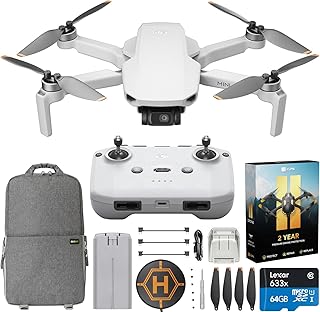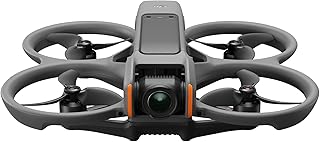DJI Drone Photography Tips for Stunning Aerial Shots:
Pre-Flight Preparation:
* Plan your shot: Identify your subject, the best angle, and the lighting conditions. Use apps like Google Earth or DJI Fly to scout locations and plan your flight path.
* Check the weather: Wind can affect your drone's stability, and rain or fog can obscure your subject.
* Familiarize yourself with regulations: Know the airspace regulations and restrictions in your area.
* Charge your batteries: Bring multiple batteries and a charging hub, as flight time is limited.
* Clean your lenses: Dirt or smudges can significantly impact image quality.
Flight & Composition:
* Fly safely and responsibly: Always maintain visual line of sight with your drone, and avoid flying near airports or other restricted airspace.
* Use the "rule of thirds": Imagine your frame divided into thirds, both horizontally and vertically. Place your subject off-center, at one of the points where these lines intersect, for a more dynamic and visually pleasing composition.
* Play with perspective: Experiment with different angles and distances from your subject. Try shooting straight down for a unique bird's eye view, or tilt the drone to create a dramatic perspective.
* Utilize leading lines: Use natural elements like roads, rivers, or fences to guide the viewer's eye towards your subject.
* Create symmetry and patterns: Look for opportunities to capture repeating elements in your scene, like rows of trees, buildings, or even waves on the water.
Camera Settings:
* Use a high shutter speed: This will help to freeze motion and prevent blur, especially when shooting moving objects or in windy conditions.
* Use a low ISO: This will help to reduce noise in your images.
* Experiment with aperture: A wider aperture (lower f-stop) will create a shallow depth of field, blurring the background and emphasizing your subject. A narrower aperture (higher f-stop) will keep more of the scene in focus.
* Use RAW format: RAW files retain more image data, giving you more flexibility in post-processing.
* Utilize the drone's intelligent flight modes: Features like ActiveTrack, Point of Interest, and Waypoint help you create smooth, professional-looking shots.
Post-Processing:
* Enhance your images: Use software like Adobe Lightroom or Photoshop to adjust brightness, contrast, color balance, and other parameters to improve your images.
* Use filters: Enhance your images with creative filters that can add specific moods or effects.
* Crop and resize: Crop your images to improve composition and remove unwanted distractions.
Additional Tips:
* Shoot during the golden hour: The hour after sunrise and the hour before sunset offer warm, soft light that can create stunning images.
* Use a polarizing filter: This filter can reduce glare and enhance colors, resulting in more vibrant images.
* Practice, practice, practice: The more you fly and experiment, the better you'll become at capturing amazing drone photos.
Remember, drone photography is a constantly evolving art form. Experiment, push boundaries, and most importantly, have fun!


